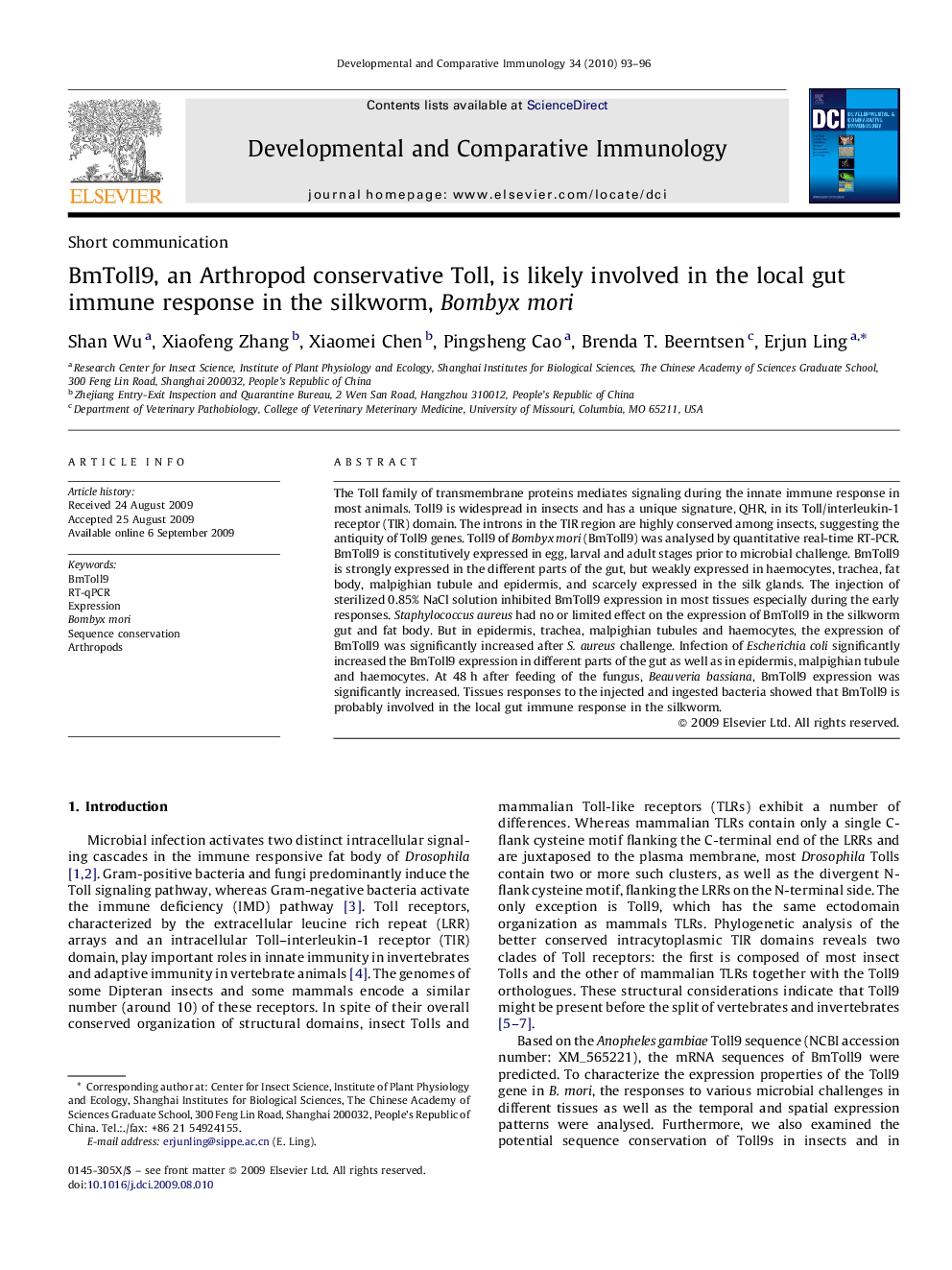| Article ID | Journal | Published Year | Pages | File Type |
|---|---|---|---|---|
| 10971678 | Developmental & Comparative Immunology | 2010 | 4 Pages |
Abstract
The Toll family of transmembrane proteins mediates signaling during the innate immune response in most animals. Toll9 is widespread in insects and has a unique signature, QHR, in its Toll/interleukin-1 receptor (TIR) domain. The introns in the TIR region are highly conserved among insects, suggesting the antiquity of Toll9 genes. Toll9 of Bombyx mori (BmToll9) was analysed by quantitative real-time RT-PCR. BmToll9 is constitutively expressed in egg, larval and adult stages prior to microbial challenge. BmToll9 is strongly expressed in the different parts of the gut, but weakly expressed in haemocytes, trachea, fat body, malpighian tubule and epidermis, and scarcely expressed in the silk glands. The injection of sterilized 0.85% NaCl solution inhibited BmToll9 expression in most tissues especially during the early responses. Staphylococcus aureus had no or limited effect on the expression of BmToll9 in the silkworm gut and fat body. But in epidermis, trachea, malpighian tubules and haemocytes, the expression of BmToll9 was significantly increased after S. aureus challenge. Infection of Escherichia coli significantly increased the BmToll9 expression in different parts of the gut as well as in epidermis, malpighian tubule and haemocytes. At 48Â h after feeding of the fungus, Beauveria bassiana, BmToll9 expression was significantly increased. Tissues responses to the injected and ingested bacteria showed that BmToll9 is probably involved in the local gut immune response in the silkworm.
Related Topics
Life Sciences
Biochemistry, Genetics and Molecular Biology
Developmental Biology
Authors
Shan Wu, Xiaofeng Zhang, Xiaomei Chen, Pingsheng Cao, Brenda T. Beerntsen, Erjun Ling,
